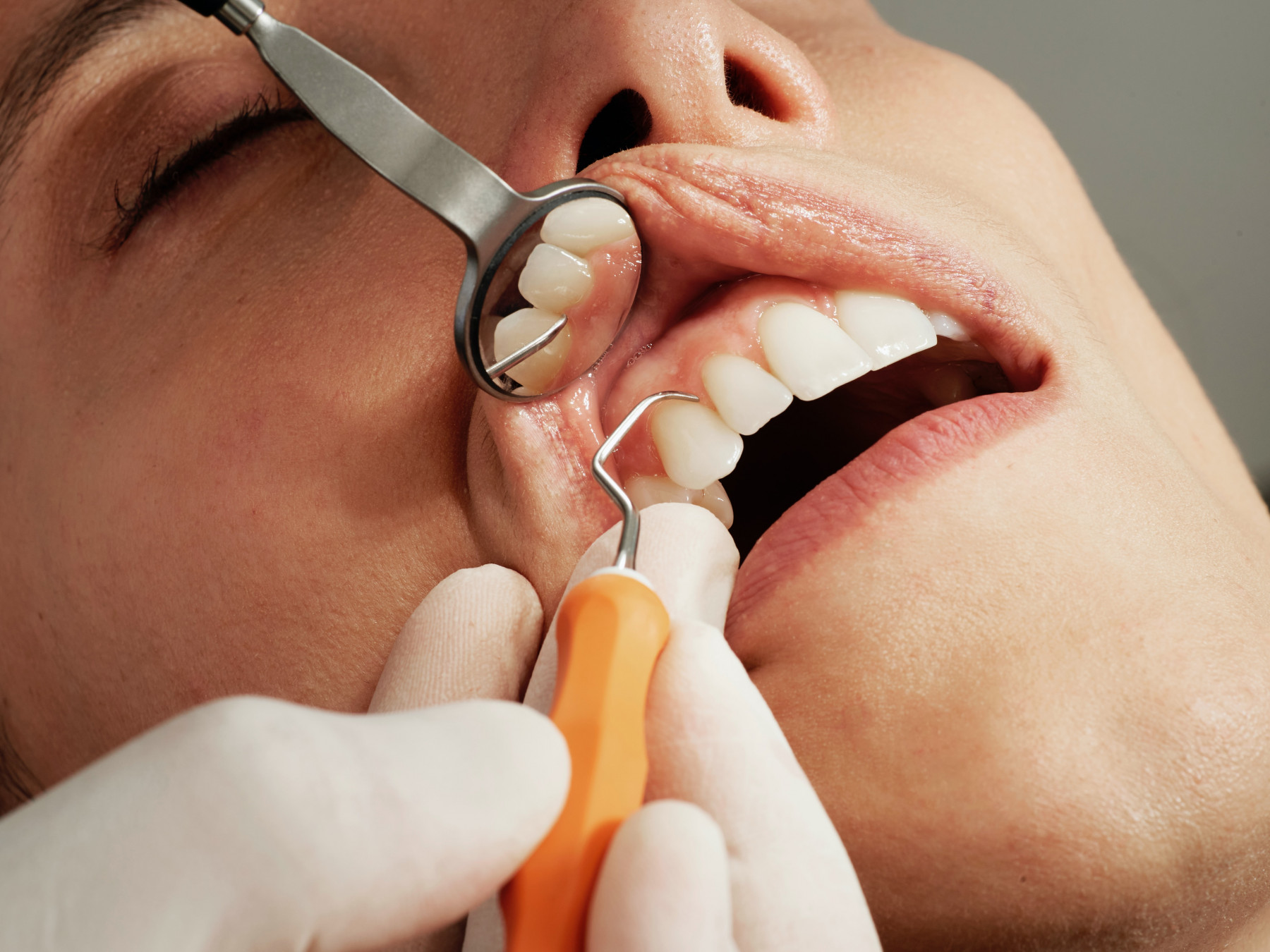Gum Disease Periodontitis Linked to Increased Risk of Parkinson’s

Unsplash/Caroline LM
Periodontitis, or gum disease, may increase the risk of Parkinson’s disease, according to a large population-based study conducted in South Korea.
The highest risk was found for individuals with both periodontitis and metabolic syndrome, a group of conditions that increase the risk of heart disease, stroke, and type 2 diabetes, among others.
“Oral diseases are prevalent in people with Parkinson’s disease,” the researchers wrote, noting that “patients, physicians, and caregivers often neglect the patients’ oral-health needs.”
“Increased cooperation from dentists and physicians is needed to ensure optimal screening, treatment, and prevention of periodontitis and Parkinson’s disease,” the team wrote.
The study, “Evaluation of the association between periodontitis and risk of Parkinson’s disease: a nationwide retrospective cohort study,” was published in the journal Scientific Reports.
Parkinson’s disease is characterized by the loss of neurons, or nerve cells, that control muscle movement and coordination, and often impacts the muscles in the hands. As a consequence, these symptoms can impact patients’ ability to conduct proper oral hygiene and care.
Previous studies have reported a higher prevalence of dental caries, or cavities, and tooth loss among people with Parkinson’s disease. However, few studies have evaluated the link between periodontitis — a gum infection that damages the soft tissues of the mouth and can destroy the bone that supports teeth — and Parkinson’s.
Now, a team led by researchers at the Catholic University of Korea, in South Korea, evaluated whether periodontitis could increase the risk of developing Parkinson’s.
Using a population-based database, the team analyzed data from 6,825,684 participants — 3,427,327 men and 3,398,357 women — ages 40 or older. All were enrolled in the National Health Insurance Service (NHIS) of South Korea. The data was collected for approximately eight years, from 2009 to 2017.
At the start of the analysis, called the baseline, 903,063 individuals (13.2%) were diagnosed with periodontitis. The mean age was 55.47 in the periodontitis group and 54.21 in the group without the gum disease. The proportion of men was slightly higher in the periodontitis group as compared with the numbers of males in the group that did not have gum disease (53.81% vs. 49.66%).
Smoking, diabetes, high blood pressure (hypertension), and high cholesterol (dyslipidemia), as well as higher mean body mass index (BMI, a measure of body fat) were more frequent among participants with periodontitis.
According to an incidence analysis, the risk for developing Parkinson’s disease was higher among individuals with gum disease.
Those with mild periodontitis had a 7.6% to 9.5% higher risk of developing Parkinson’s disease, depending on the statistical model used.
The increased incidence of Parkinson’s disease among those with periodontitis persisted even after adjusting for key factors, including age, sex, and BMI, and smoking, drinking, and exercise habits. It also persisted after factoring in level of income, and other medical conditions such as diabetes, hypertension, dyslipidemia, stroke, and depression.
The highest risk for developing Parkinson’s was seen in people with periodontitis and metabolic syndrome, who had a 16.7% higher risk compared with those without the two conditions.
Of note, metabolic syndrome is an umbrella term for conditions that occur together and increase the risk of heart disease, stroke, and other vascular diseases. Such conditions include high blood pressure, high blood sugar, excess body fat around the waist, and abnormal cholesterol or triglyceride levels.
“There is a great need to encourage dental plaque control,” the researchers wrote.
Specifically, the researchers examined the effect of dental scaling — when a dentist removes all the plaque and tartar (hardened plaque) above and below the gumline — on Parkinson’s risk.
“The protective effects of dental scaling were evaluated, and the results showed that the patients without periodontal inflammatory disease who underwent dental scaling over five consecutive years had a significantly lower incidence of Parkinson’s disease,” the team wrote.
“Moreover, the development of Parkinson’s disease was lower for the people receiving scaling with periodontitis when compared with the participants receiving scaling without periodontitis,” they wrote.
The effects of one year of periodontitis treatment also were evaluated to determine its impact on the incidence of Parkinson’s disease. The risk was found to be higher for patients who required further visits.
Overall, “a weak association between periodontitis and Parkinson’s disease was suggested after adjusting for confounding factors from the population-based large-scale cohort of the entire South Korean population,” the researchers wrote.
“Treatment and prevention of periodontal diseases may benefit systemic health,” including lowering the risk for Parkinson’s disease, the study concluded.








